#i have an actual macro lens now
Text
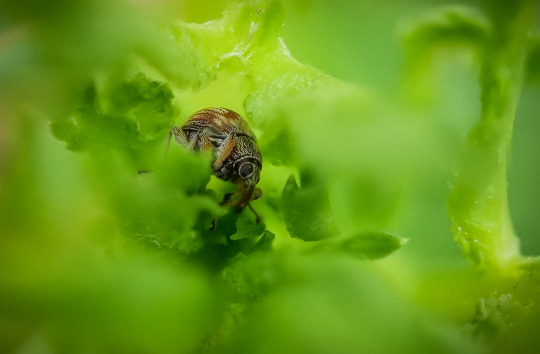
another incredibly small weevil, hiding deep in the new growth of my marigolds.
Unknown weevil (superfamily Curculionoidea) on marigold (Tagetes sp.).
#i have an actual macro lens now#get ready for some crispy photos :D#ill still be posting older pictures though#theres a lot of absolute bangers ive yet to post#ljsbugblog#bugblr#entomology#insects#curculionidae#curculionoidea#weevils#macro#unconfirmed ID
431 notes
·
View notes
Text
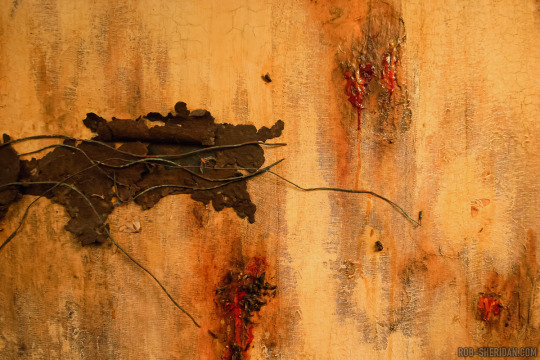
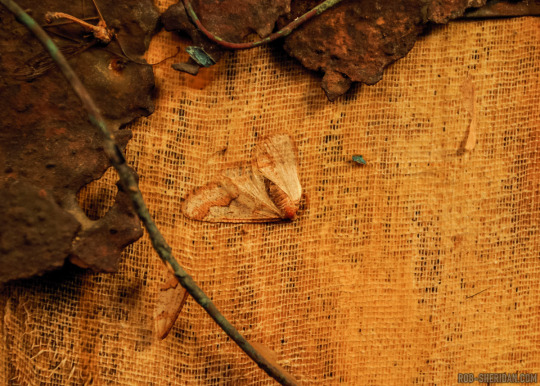
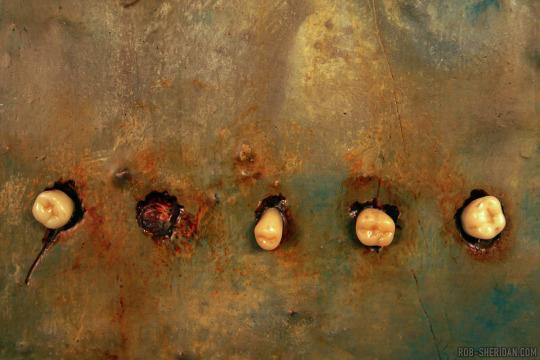
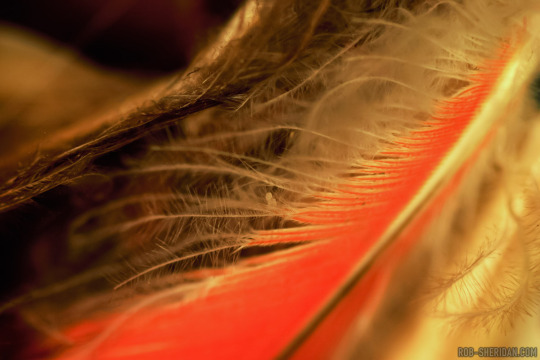
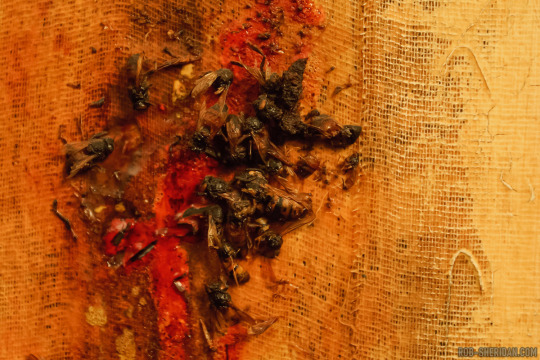
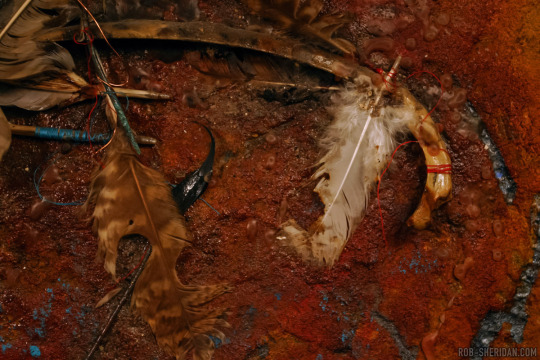
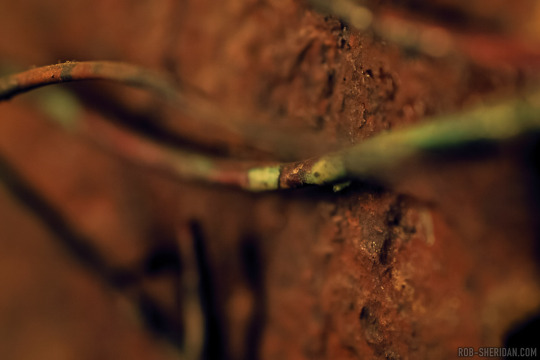



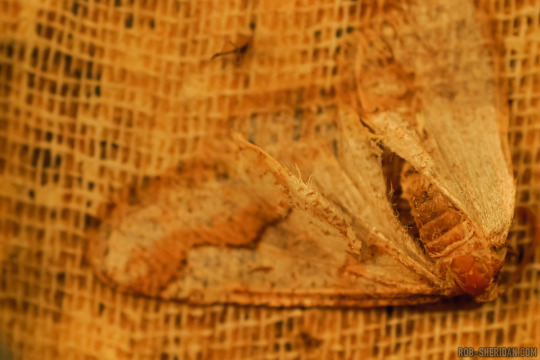
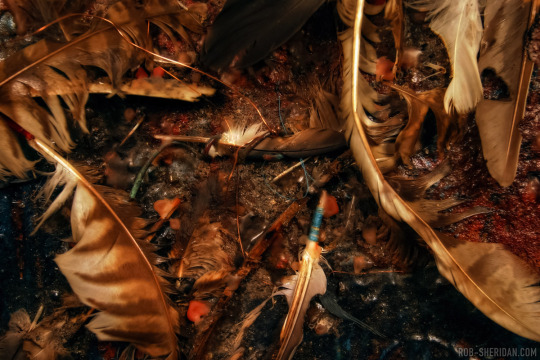
Hard to believe Nine Inch Nails' classic The Downward Spiral is 30 years old today! Here is some detail photography I took of the original album cover painting by Russell Mills for the 10th anniversary deluxe edition release, which I had the unique honor of designing, and somehow that is now 20 year old.
Everyone has that one album that hit at just the right moment of adolescence to change their perspective on music and get them through their teenage angst. The Downward Spiral was that album for me, released as it was in 1994, when I was a freshman in high school (and an absolute banner year for music/films/games all around). I must have stared at the artwork for hours over those years, without even much detail to draw from on its tiny 5” CD slip case. So five years later, when I found myself inexplicably working for Nine Inch Nails, it was surreal to see the actual original painting in the flesh, hanging as it was at the time in Trent Reznor’s office at Nothing Studios, New Orleans.
I was struck by how much dimension and texture there was in the artwork that never translated on that tiny slipcase printing, how much detail was happening in the physical materials of the art: Flies, moths, wires, blood… I had been staring at this “painting” for so long, yet suddenly it was like I had never seen it before. I also noticed that it had aged - the wires had wilted over the years, drooping down from their original position as captured in the original album cover (interestingly, judging by the photo posted today by NIN, the piece has since been restored); a tooth was missing from the other main piece.
That experience stuck with me and it was the first thing I thought about when the task of re-imagining the album package fell upon me in 2004. I wanted to re-photograph the artwork, subtly updating the cover to show that ten years had changed it physically, much like our perceptions of art and music and memories change over time with perspective. I also wanted to dig into the previously unseen details of the work and explore it with my macro lens, so that fans like me, old and new, could have new layers of texture to pore over for hours while listening to a legendary album.
Happy birthday, old friend.
#nine inch nails#the downward spiral#nin#trent reznor#90s nostalgia#90s music#industrial#rob sheridan#Russell mills#photography#album art#album design
2K notes
·
View notes
Text
A Nightingale Sang in 1941
This is my inaugural meta (yay!) Eventually I will learn how to add gifs and whatnot to make this more interesting but today, I give you a wall of text.
I need to give credit where credit is due to three existing metas that I’m drawing upon heavily here:
A speculative continuation of the 1941 story, which includes an almost-kiss while “A Nightingale Sang in Berkeley Square” plays on the gramophone,
A behavioral analysis of Aziraphale during the S2E6 finale (will find ref later if possible)
A meta-analysis of the way in which “coffee” is used as a symbolic equivalent for liberty and freedom of choice, a running theme of this show (will find ref later if possible)
I’m going to expand upon meta #2 and #3 and explain why I think there is are very compelling reasons to believe that #1 will be canonized.
At the end of S1E6, an instrumental version of “A Nightingale Sang in Berkeley Square” plays diegetically, but the lyrical version plays non-diegetically over the credits (we hear it but the protagonists don’t). So we the audience could plausibly say “that’s their song,” but as of the close of S1, we have no reason to believe that they know that it’s their song. Even Aziraphale’s S1E3 (1967) suggestion that they dine at the Ritz could be a reference that only he gets, or just a fancy restaurant suggestion.
So when I was watching S2E6 and Crowley said “no nightingales,” I was jarred. What does that even mean? We know it has something to do with dining at the Ritz, but what does it mean to them? The reference only works if they know it’s their song. But we’ve only ever seen them hear it together after the averted apocalypse; if this is the direct reference that Crowley is making, it leaves our 1967 reference contextless and twisting in the wind.
If we assume that there was a romantic story beat in 1941, wherein “A Nightingale Sang in Berkeley Square” (which, incidentally, was written in 1939 and saw the height of its popularity at the end of 1940, so timeline-wise it’s spot-on) became their song, then a lot of events get renewed interpretations through this lens, in a way that makes this story much more cohesive and the “no nightingales” comment even more soul-shattering than it already was.
Let’s presume that immediately after this became their song and just as they were discovering their romantic potential, they were forced back into hiding. Forever after, references to the song serve as a macro for “I’d like to pick up where we left off that night.”
The 1967 suggestion of “dining at the Ritz” now becomes a directly romantic suggestion. It also gives better context for “you go too fast for me.”
Actually going to the Ritz in 2019 is not simply a celebration or even a callback to 1967, it’s a callback to their almost-romance of 1941.
When Crowley says “no nightingales” in 2023, this isn’t to say “we’re not going to eat together at the Ritz anymore.” It’s saying that the romance that began that night, the precious, fragile romance, is over.
I’ll give you a moment to dry your eyes before we move on to metas #2 and #3.
In light that this is what has been going on - they know they want a romantic relationship but have gotten so used to hiding and denying it that they are more comfortable keeping the status quo static and quo-y then trying to achieve their ideal - a lot of S2 behavior can get a fresh view.
Crowley’s reaction to Nina isn’t a realization that he’s in love - he knew that already. You can only ask someone to run away with you so many times before you are forced to admit some things to yourself. No, he’s realizing that trying to hide it (which was justified by survival), hasn’t been working, but despite failing at being stealth nothing bad has happened. He’s realizing that it may finally be safe to show it.
Crowley’s confession, then, is not a revelation. It’s making the subtext text. He’s not telling Aziraphale anything he didn’t already know. He’s saying it now because he thinks he’s safe to do so. Pin in that.
Lots of people have lots of theories about Aziraphale’s motivations in the S2 finale, which can more or less be divided into 4 camps: the genuinely held belief, the coffee theory, the lie theory, and the mutual trick theory (some version of the body-switching at the end of S1). Let me start by saying that I love all the fans and all their theories and I find their analyses to be insightful. The genuinely held belief theory, while I believe it to be erroneous, has been incredibly conducive to so many wonderful conversations and I love being in a community that has those conversations. But I’m going to explain why I think the lie theory finds the most support in canon.
Re-watch the finale (when you feel like you can) from 35:18 to 36:19 and then from 40:45 to the end, paying very close attention to Aziraphale’s words and his eyes. Michael Sheen is telling us a LOT with his eyes, and in the back half of the finale scene, with pacing.
For 60 seconds of footage, this setup is doing a lot of work. If Neil Gaiman wasn’t doing enough to beat us over the head with how evil the Metatron is, that glare at Crowley at the end with the non-diegetic ominous horns should convey the message. But again, focusing on Aziraphale. He initially refuses to talk to the Metatron; he’s made his position quite clear. There is no hint of regret or wavering; this is not someone who’s aching to return to the fold. The Metatron ignores his refusal and functionally forces him to accept a “cup of coffee.” The coffee isn’t spiked, but it is a metaphor. It is symbolic of choice. The Metatron is going to force Aziraphale to make a choice. Meta #3 does a great job of exploring the idea that a choice between anything and death is never really a choice. Hang onto that thought.
Notice I had you start up again 3 seconds before “The Conversation.” That’s because it’s important to note where the Metatron is right now. He is across the street, staring straight in through those giant windows to where our protagonists are about to have The Conversation. He is watching.
When Aziraphale returns, Crowley begins his “let me talk” riff. Aziraphale ought to be interested in what Crowley has to say, since the preamble is pretty compelling. You’ll notice that Aziraphale quickly turns to the window and back, through which he (but not we) can see the Metatron standing there, watching them. Aziraphale is then doing his best to get Crowley to STFU without raising the suspicion of the Metatron, eventually having to cut him off.
Because unfortunately, Crowley’s entire impetus for speaking up now is that it’s safe to do so. Only Aziraphale knows that they are in very real danger (or at least, Crowley is, but I’ll come back to that).
You might take something from the fact that he’s shaking his head while talking about “incredibly good news,” and seems to self-censor his criticism of Metatron (or more specifically, he takes ownership of any criticism of the Metatron, censoring out Crowley’s role in that, with the emphasis on I in “I might have misjudged him”).
Notice in the flashback that he begins the conversation reasonably relaxed. The Metatron also says a series of things about him that not only are false, but everyone, including the Metatron and Crowley, know are false: Aziraphale is not a leader, he’s a defector; he’s not honest, he lies all the time, in fact this entire season revolved around his one huge lie of hiding Gabriel. Not only does the justification not make sense coming from Metatron, but it shouldn’t make sense that Aziraphale would accept these reasons and it shouldn’t make sense to Crowley either. So is Aziraphale including these details in his recounting to Crowley so that he will get suspicious and figure out the jig? Maybe. Let’s continue.
Immediately upon being offered the job of Supreme Archangel, Aziraphale says “but I don’t want to go back to Heaven.” This is direct evidence against the genuinely held belief theory. If returning to Heaven and making a difference was a genuine motivation, we would have gotten a different response at this moment. But then we get something more.
“Where would I get my coffee?”
This is a beautiful response for a number of reasons; coffee should be trivial compared to the opportunity to be a Supreme Archangel, so it serves to highlight just how little interest Aziraphale has in returning. Taken at face value, it’s the Aziraphale equivalent of “not even at gunpoint.” But remember that coffee is a metaphor for liberty in this universe and this season. So what Aziraphale just said, in the language of Neil Gaiman metaphors, is:
I don’t want to go back to Heaven, I would rather have free will.
What does the Metatron do next?
He brings up Crowley.
Watch Aziraphale’s eyes before and after the mention of Crowley. He goes from confused to eye-flicking panic in the space of two syllables. Aziraphale already understands that his “no” is not being accepted, and that bringing Crowley into it can only possibly serve as a threat.
So the coffee, the choice, is a false choice. No one ever orders death. The Metatron has forced Aziraphale into a situation that looks an awful lot like a choice (it comes in a blue cup, after all) but it isn’t.
We definitely have some reliable narrator problems here. I’m going to presume for purposes of analysis that these cut-outs are accurate but incomplete, and that a more explicit threat about what would happen to Crowley if Aziraphale did not return to Heaven was made.
If we assume that Aziraphale has been made aware of a threat and is trying to hide that from Crowley, the rest of this scene reads very differently. Aziraphale cannot say, “you are in danger but you will be safe if you swear your allegiance to Heaven” or “I have to go, no matter what, and the only way we can be together is if you come with me,” but nonetheless he now has to convince Crowley to do the one thing he ought to know Crowley definitely doesn’t want to do all through subtext. Which we’ve spent an entire season establishing that they can’t communicate well when they are allowed to use their words. Disastrously, this is not a magic trick that Aziraphale can make work when it counts. Their failure to practice good communication means that, right now, when it counts most, they are not going to pull it off.
We see that Aziraphale is very hopeful that Crowley will pick up on his cues and play along. Obviously, he doesn’t.
If the whole riff about Hell being bad guys and Heaven being the side of truth and light is taken as genuine, it discards a massive amount of character development that we’ve witnessed in Job, Edinburgh, etc. (again, to all the genuine belief subscribers, I think it’s a compelling argument but it simply doesn’t account for the evidence). So if it’s not genuine, why say it? Again, to alert Crowley that something is Off, because Crowley should know that Aziraphale doesn’t actually believe that. They saved humanity from Heaven and Hell. They hid Gabriel from Heaven and Hell. Crowley knows that Aziraphale knows that Heaven and Hell are just two sides of the same coin. Notice again that Aziraphale glances out the window while he’s talking up Heaven; he knows the Metatron is watching, he can’t not defend the position of Heaven. I think it’s also worth noting that Aziraphale forcefully glances and gestures off to Crowley’s left (away from the window) when talking about Hell, and then turns his head to Crowley’s right (towards the window) to try to get him to realize that a representative of Heaven is literally standing right over there, just look out the window please dumbass!
When Crowley is asking Aziraphale if he said no, and we see the back of Aziraphale’s head, again we can see him turn his head to glance out the window. This is also when he changes strategies, and admits that Heaven could use a little reform. Because now there’s a problem almost as big as getting caught, which is that he won’t be able to get Crowley to go with him.
Which unfortunately makes the next part of this so much more heartbreaking. Because when Crowley begins his speech about being a team, Aziraphale wants to hear it. He can’t bring himself to shut down Crowley again, even though it could get them both in massive trouble. Notice that he glances out the window again during this, and the look of panic on his face. He begins to shake his head when Crowley mentions that Heaven and Hell are toxic; this can be taken a lot of ways but I’ll argue for the interpretation that he’s trying to get Crowley to STFU and stop saying shit that could get him destroyed.
After Crowley puts on his sunglasses we are in the “back half” and Sheen is doing a lot with phrasing here, specifically pregnant pauses.
“Come with me… to Heaven!”
“We can be together… as angels!”
Based on the pacing decision I am thoroughly convinced that the first half of each of these statements is intended to be the message to Crowley and the second half is always a qualifying statement to satisfy the Metatron.
Unfortunately, these pregnant pauses are completely backfiring in their effect on Crowley. The sentiment gives him hope and the qualifying statement crushes it again immediately. He is being taken on a horrible emotional rollercoaster with these declarations which are only further amping up his instinct to run away.
The only truly genuine, unaldulterated statement I think we get from Aziraphale is
“I need you!”
When it becomes clear to Aziraphale that there’s been an irreparable breakdown of communication between them and the subtext is not getting across, he says:
“I don’t think you understand what I’m offering you.”
He means this literally. Crowley has not understood that Aziraphale is offering him protection from whatever threat the Metatron has made.
Which makes this part extra-devastating and also absolutely in keeping with a major running theme of this season.
“I understand. I think I understand a whole lot better than you do.”
Your understanding and my understanding are different understandings.
Crowley views the offer to return to Heaven through the lens of his trauma. He understands what life in Heaven would be like. But he doesn’t understand that Aziraphale is offering him protection.
But Aziraphale just heard Crowley say that he understood everything, and he’s still going to leave. There might be a little suspense of disbelief here to believe that Aziraphale really interpreted the statement this way, but we know that Aziraphale isn’t always the brightest battery-operated candle in the drawer. So under the assumption that Crowley did understand him and is still rejecting the offer, rejecting him—
“Well, then there’s nothing more to say.”
Please pay very close attention to Aziraphale’s body language for the next part. He’s active, agitated, turning side to side, arms swinging. This is a very fidgety angel.
“No nightingales.”
Aziraphale is now completely still. He’s feeling that feeling. You know it. The one where your entire body is getting sucked into the pit of your stomach. The aching paralysis.
This is their song, the one that began their romance in 1941, the secret code for all other attempts at flirtation. Crowley has walked out on him before, Aziraphale has been stubborn and obstinate before. But they always came back together, sometimes with an apology dance or other rituals that belonged solely to them.
But now the song is over.
By saying this, Crowley has broken up with Aziraphale. We can see in Aziraphale’s sudden transition from fidgety to paralysis that he has understood it this way.
Then he turns away from the window so that the Metatron won’t see him cry.
The kiss was heart-wrenching already. But we’re not done with this analysis.
During the kiss, Aziraphale has a choice to make between two very compelling bad choices. This is the Job dilemma. But worse.
If he doesn’t kiss Crowley back, he will let Crowley think that he doesn’t love him. He will have missed out on this (maybe/probably their first kiss?) and regret it forever.
If he does kiss Crowley back, in full view of the Metatron, they are in deep trouble.
He seems to do his best to split the difference. I would even go so far to say that the awkward arm waving is Aziraphale acting for the Metatron’s benefit, to try to portray that he doesn’t want this even though he absolutely does (just not like this). The anguish when they break the kiss is absolutely real, and the first thing he does is glance out the window. Through all this he has remained painfully aware of their spectator.
He wants to say I love you. He mouths it. He breathes it.
But the Metatron is watching.
He can’t tell Crowley I love you. So he has to say the only other thing that has always unequivocally meant “I love you” when he said it to Crowley. He has to hope that Crowley understands him now, even though he never has before.
Spoiler alert: Crowley doesn’t.
My forgiveness and your forgiveness are not the same forgiveness.
One more point against the genuine belief fans (I love you): if the offer to let Crowley back in is what changed his mind, then Crowley declining removes that incentive. Aziraphale should/would have consequently retreated to his last stated position of “I don’t want to go back to Heaven, where would I get my Crowley—I mean, coffee?” [post-publication nod to @theonevoice for a great little meta] It simply doesn’t hold up to scrutiny.
I think a lot of fans were already making these assumptions about the use of the nightingale song so this meta may not feel revelatory, however, it isn’t canon (yet), and I’m sure I’ll find company that agree that canonization of this connection would strengthen a lot of these story points, as evidenced by how it is already assumed by many fans.
If you made it to the end - omg thank you! Please leave a note and tell me your thoughts!
Bonus: somebody already made the song connection here
~~~
if you liked this, you may also like:
Book of Life and what it means for Crowley
The Erasure of Human!Metatron
Baraqiel and Azazel
~~~
Recommended related (lie theory) metas by other people:
making the subtext text by @theonevoice
Aziraphale's Decision Matrix by @yowlthinks
Nothing Lasts Forever: META by @phoen1xr0se
#good omens#good omens 2#neil gaiman#coffee theory#lie theory#no nightingales#metatron#good omens meta#the metatron#good omens 2x06#fuck metatron#metatron good omens#good omens 1941#michael sheen#crowley#aziracrow#aziraphale x crowley#ineffable husbands#aziraphale#ivoc
1K notes
·
View notes
Photo

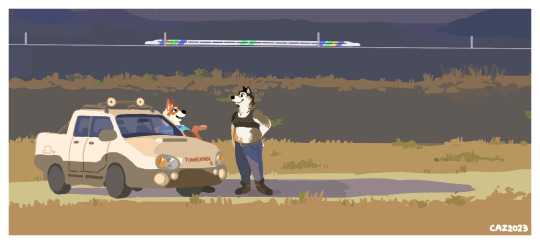
Yarragardee Basin, Mangala, 7995 A.D.
------------------------
Accompanying music: You’re On Fire by They Might Be Giants. Summer road trip music of all time, in my opinion.
Here’s a little expository write-up on the history and geography of the worlds shown here. Someday I’ll have more to show of the personal story of these two critters and their travels; until then, a more macro-level description.
------------------------
Mangala and its sister world Kahira (visible in the background) are binary planets, orbiting one another in a manner not entirely unlike that of Pluto and Charon in the Solar System. Mangala is a relatively small world - just about twenty percent the mass of the Earth, something like if you took two copies of Mars and smushed them together; without the internal heat to drive a carbonate cycle long term, it had long been a frozen, dusty, and arid place when transhumanity first established a permanent presence in the Tahoka system some four hundred years ago. Since those early days, terraforming using a Birchian soletta system (a huge but foil-thin Fresnel lens of mirrors, with a secondary focal lens for burning atmospheric gasses out of the regolith) has rendered it shirtsleeve habitable to baseline humans across much of the surface, although the global water inventory remains low* and the air in the “continental” uplands is stratospheric, with only the hardiest lichens establishing a foothold. Most of Mangala’s major metropolitan areas are located in the deep rift valleys and basins, where air pressure is highest.
Kahira on the other hand, a rock almost a fifth the mass of its sister world (a little under the mass of old Mercury), remains unterraformed - surface conditions are persistently cold, with a thin barely-Martian atmosphere. Some of its larger rift valleys and craters have been tented over, aerated, and planted with tall low-gravity forest and grassland, a style of habitat construction dating back to the first Mars colonists almost six thousand years ago. Industrial complexes and buried cities sprawl out across the bare surface of the moon, with huge low-gravity lava tubes seeing extensive urban development.
The Yarragardee Basin, pictured above, is a graben basin in Mangala’s northern hemisphere, notable for the historic industrial city of Tirupati - here we see two road-trippers between cities on the basin’s great plain, taking a break in the long late afternoon of a sunset-day***. Having stopped for a night at a motel near Tirupati’s aerospace complex, they’re now continuing their journey to the city of Redmond-Tonasket, located in the Woronora Valles trench system about two thousand kilometers to the southwest.
* While plenty of water could have been imported from Tiandonias’s cometary halo, it was decided not to do so in order to avoid inundating pre-existing cities in the valleys and deep basins. The extremely humid hothouse conditions that come after slamming dismantled ice moons through the stratosphere at over six kilometers a second were also broadly considered unacceptable.
** Smaller worlds have been terraformed in transhuman space, both by worldhouse and more open-air methods, but it’s largely the kind of thing that much more energy-rich systems do as a vanity project. Kahira may someday see blue skies, but likely not for a thousand years at least. (edit, one year later: I actually changed up some of this while simulating this system for stability. I’ll be posting more about this soon.)
*** Mangala and Kahira, being tidally locked to each other such that they always show one another the same face as they orbit their common center of mass, both have days exactly as long as their orbital periods - 403 kiloseconds, or roughly 112 hours. This is for convenience divided into month-weeks comprising four “circadian days” of 100 kiloseconds (~26 hours), with the remaining three kiloseconds added on to the last day of a month-week to keep synchronization.
549 notes
·
View notes
Text
I have some guys here taking pictures of my mom's stuff. Yesterday I noticed they put a white cloth over our big kitchen light. "Oh, is that for diffusion?" I thought it was a clever hack to get softer light for their product photos. They were surprised I knew what it was for. I told them I was a photographer. I mentioned I actually had a bunch of special plastic that I use for diffusion. One mentioned he had an interest in photography and was curious about my diffusion material.
He told me about his camera and how he wished he had a better one so he could take better pictures of jewelry for his job. I didn't say anything, but his camera was fine. All modern cameras are fine. Smartphones are even fine. If he wants better pictures of jewelry and whatnot, he needs to learn about lighting. I didn't want to correct him, but I thought maybe if I showed him my lighting setup with the plastic he was interested in, that might send him on the path to better pictures.
So today I brought out my computer and showed him some examples of my product photography and my lighting setup with the diffusion plastic. But once he saw my photos his attitude changed very quickly. He acted like he suddenly lost interest. I found this really odd.
The leader of the group asked to see the pictures. He was impressed and wished his auction photos could look that good. I told him my approach would not work for the assembly line style photos he needs to do, but there was a different approach that might work. I showed him the Karl Taylor light cone.


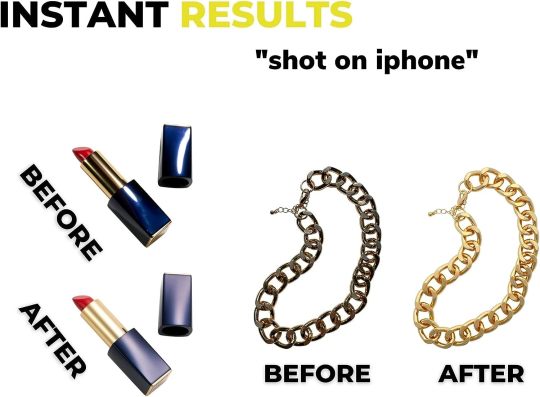
You just put two lights on either side and take a picture through the hole in the top. You get wonderful gradient lighting with almost no effort and you could create a system to take many photos very quickly.
He was very interested and asked his friend, "Have you seen this light cone? You should also look at all of these product photos he did. They're amazing."
He was once again dismissive and uninterested. And it was then I figured out his issue.
Jealousy.
I kept trying to explain the cone and lighting to the leader and the other guy would say, "Yeah, I already knew that. I just need a better camera is all"
The leader then made me show him my photos and I already knew it was a bad idea, but I was kind of stuck. I showed him more of my product photos of bottles and jewelry and he was like, "Yeah, I could do that. That's called a "sexy bottle shot." I've done that. I just need a better camera."
He was in pain seeing my photos. I'm pretty sure he felt like I was showing him up. Asserting photo dominance. And that was never my intention. I just wanted to share what I knew. I was excited to meet another person with the same interest. But that turned into an awkward and jealous dismissiveness and he did not want to know how I got the results I was forced to show him.
And then, despite the dismissive lack of interest, he says under his breath, "What kind of camera are you using?"
After all the awkwardness, he still didn't catch on to the lesson I was trying to teach.
It is not the camera.
"I just need something to get better closeups."
I should have kept my mouth shut after that. I already knew he didn't want to listen to what I had to say. But I also felt bad that this guy was going to buy an entire new camera and lens to get the same results he is getting now. And so I was like, "Have you heard of macro extension tubes?"
"Oh yeah, I know about them."
He did not.
"You can get some of those and put them on any lens you have and get really great close up shots. Works even on a cheap $100 lens."
"Yeah, I've seen those. Not sure they're what I need. I just need a better camera."
Oof.
298 notes
·
View notes
Photo

Creator Spotlight: @textless
Hi! My name is Amadee, and I am a librarian who lives in Arizona. I also love taking photos in my spare time.
Check out our interview with Amadee below!
What got you started in photography?
Both of my parents were very interested in photography. I’d always loved looking at their work, and in high school, I got a 35mm camera as a gift, so I could start taking photos myself. Back then (in the actual 80s), HS students in the Minneapolis area could take classes at area colleges for dual credit. I started taking photo classes at the University of Minnesota and had access to a darkroom and nearly unlimited film and processing supplies without realizing just how amazing that was. I took many photos of friends, acquaintances, and strangers, and I loved looking at work by Nan Goldin and Bill Owens.
After college, without access to a darkroom, I stopped taking pictures almost entirely.

How has technology changed the way you approach your work?
Bluntly, technology allowed me to start taking photos again. The first digital cameras I tried in the early 2000s were terrible: slow, clunky, and with next to no storage capacity. Even so, they seemed like the first step in an interesting direction. By 2008 or so, I had a point-and-shoot digital camera and rediscovered what I loved about photography… except that I no longer wanted to take pictures of people. Soon I started taking photos of tiny things, especially insects, and my little camera wasn’t up to the task. I got a DSLR with a macro lens in 2010 and haven’t stopped taking photos since.

I know many photographers who are nostalgic for film, whether or not they were around in the analog era. More power to anyone who wants to spend the time and money, but I don’t miss film even a little. For the kind of photography I enjoy, which is almost entirely documentary, the ability to take an unlimited number of photos, and see what did or didn’t work right away, makes all the difference.
You've also written books in the past—what was the most challenging, yet rewarding part of the process?
I was a children’s librarian for many years and just love books. So, when I started writing, I hoped to create books that would connect with kids and spark their imagination. Cortez the Gnome was a book I would have liked to see as a kid, and the art project elements were fun and frustrating. Gentle Hands filled what felt like a gap in my storytimes and gave me a chance to work with a publisher I like very much. Alas, my biggest challenge is that I haven’t had an idea in years! I write occasional blog posts for Free Spirit on topics related to serving youth, but working with kids was the spark for new ideas, and these days my work is mostly admin. I enjoy it more than I would have guessed years ago, but as a wellspring of inspiration, it is not.
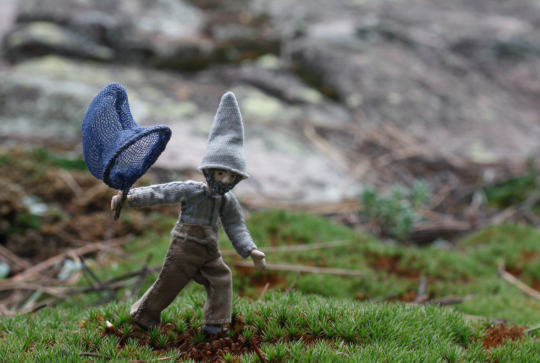
How do you create healthy boundaries in balancing your day job and personal aspirations?
Work comes first every time. That might sound like a drag, but I truly like my job and think library service is critically important. In some of the tiny communities we serve, the library is the only gathering place open to everyone, and the only place to access fast internet, enrichment activities for kids, books, movies, and all kinds of other good stuff. I love taking photos, but I would hate to make a job of it.
What is the hardest part of your process?
The process itself is just fun, and I’d stop if it weren’t. I used to stress about editing and posting photos soon after taking them because I wanted to create a sort of nature journal in real-ish time. That wasn’t sustainable, partly because the subjects that interest me are so seasonal. I might take 2,000 photos in August (peak macro season here), but only 100 in February. Now I just try to indicate when photos were taken and know that I’m the only person who particularly cares about that. For years I posted six new photos each day. Now I generally post two and skip days or longer whenever it suits me.
Right now, the biggest challenges are external. First, my vision is less and less sharp. It’s nothing severe, just a function of age, but it makes me think I’d better develop an interest in non-tiny subjects at some point. Second, some small but annoying health problems have kept me from getting out much over the last year. I used to take a hike or long walk at least once or twice a week, and more in peak bug season. Since last September, I’ve taken two longish walks and mostly stuck to the yard. On the plus side, it’s an excellent yard with an ever-growing assortment of interesting plants and insects.
While this is frustrating in some ways, it’s also a distillation of something I have always liked. Even when I was hiking all the time, I enjoyed going back to the same places, again and again, getting to know them in detail and watching the seasons roll through. Staying so close to home this year has been an extreme version of that, and some aspects of that have been very satisfying.



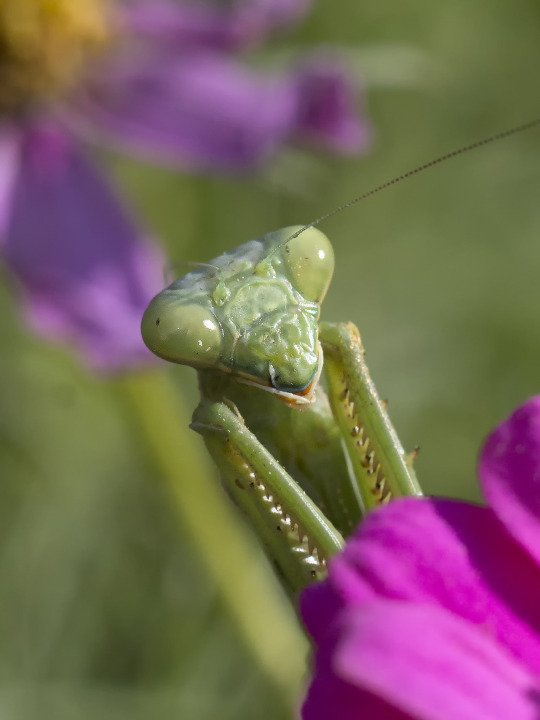
I should also say, for the record, that I am not technical at all. I’m not interested in new gear as long for its own sake, and I don’t like messing with camera settings or anything fiddly. My favorite piece of photo advice ever was “f/8 and be there,” which I took to mean finding a basic setup you like and focusing on the subject at hand. I like finding strange or beautiful things that other people might not notice and trying to make them interesting to a wider audience. (Wider than just me, that is.)
What is something you would love to photograph but haven't had the chance to yet? Why?
This is oddly specific, but I desperately want to find an Arizona Unicorn Mantis (Pseudovates arizonae; check out the photos here). Several have been spotted within two miles of my house, but I have never found one yet. They are otherworldly and just fascinating. Insect goals!
Are there similarities or differences in your workflow when it comes to photography and writing?
Mostly difference in that photography is relaxing, and writing is nearly impossible, at least right now.
Who on Tumblr inspires you and why?
There are several excellent photographers who live in my corner of Arizona, and I love their work because it shows different aspects of a place I care about. Also, their photos are just gorgeous.
@fatchance is practically a neighbor and an all-around lovely person. He takes beautiful pictures of birds and desert flora, and unlike me, he takes the time to learn about and share good information about his subjects.
@thelostcanyon is another south-eastern AZ photographer I admire, and he is also a very good painter.
@inlandwest is actually my partner. We’ve lived all over the west together, and I like that his wide-open-spaces aesthetic is so different from my focus on the little things.
A little farther afield, I love @macroramblings, and Celeste, of @celestialmacros, @celestialphotography, and @occasionallybirds, for their beautiful macro work. @mostlythemarsh is another long-time favorite. He’s not a macro photographer, for the most part, but I like seeing familiar places through the seasons, and I like the stark difference between his environment (east coast/Canada) and my own.
Thanks for such wonderful answers, Amadee. Check out her beautiful photography work over at her Tumblr, @textless!
#creator spotlight#photographers on tumblr#writers on tumblr#macro photography#textless#insects#bugblr
566 notes
·
View notes
Text
The Pale Elf
3D print sculpted by Bulkamancer, printed in Siraya Tech grey UV Resin on my Elegoo Mars 2, and hand-painted by me! I cannot be more pleased with how he turned out 🥰

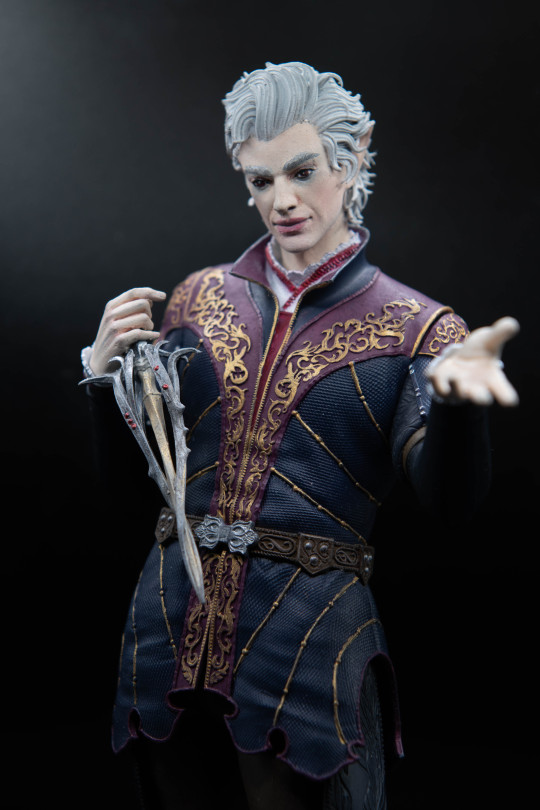

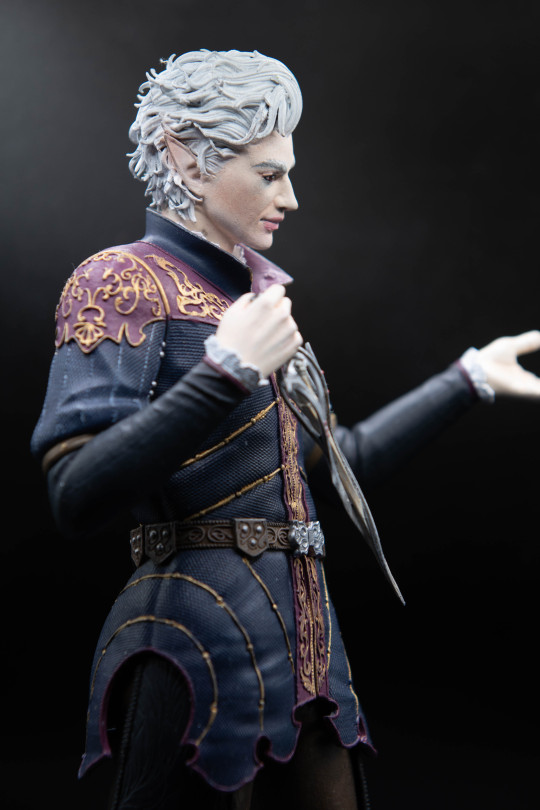
Detailed shots under the cut
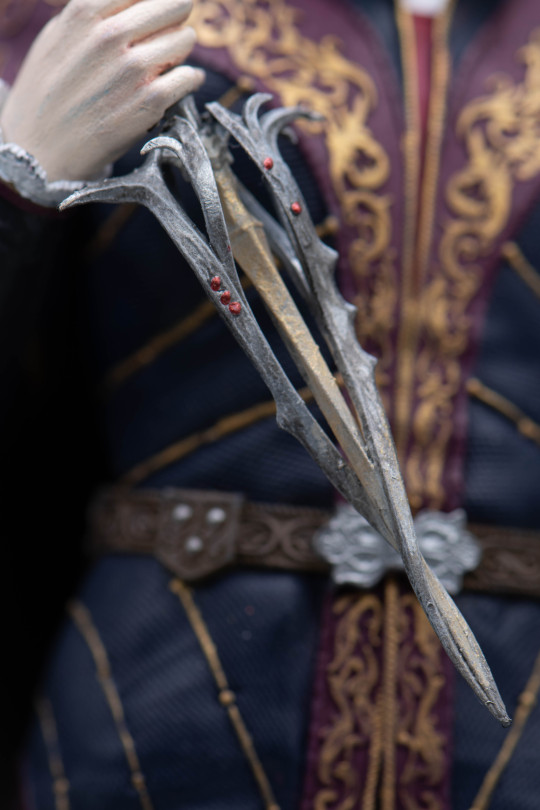

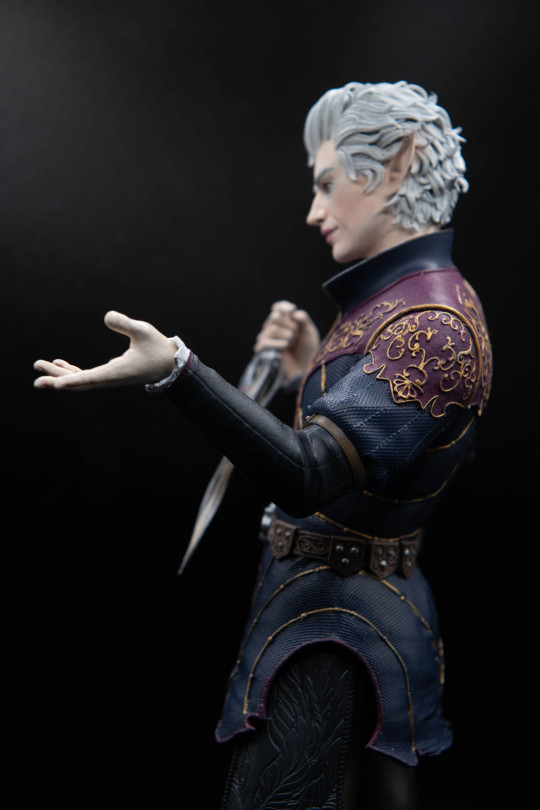
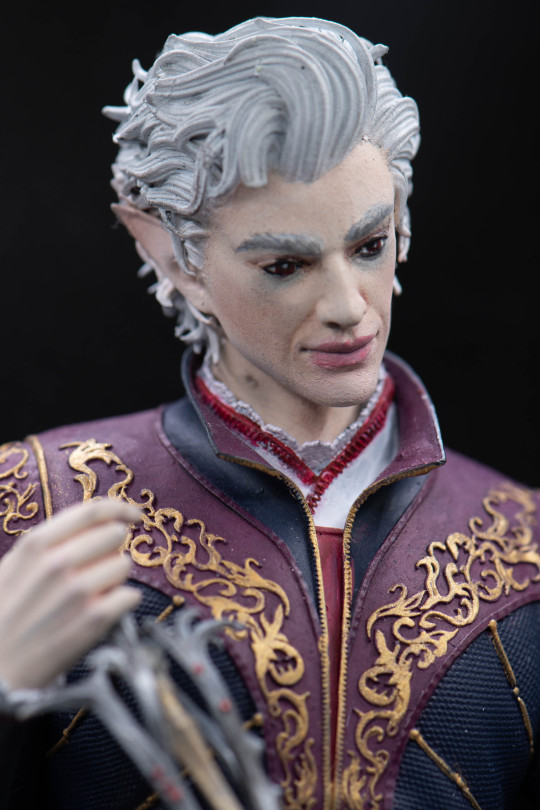
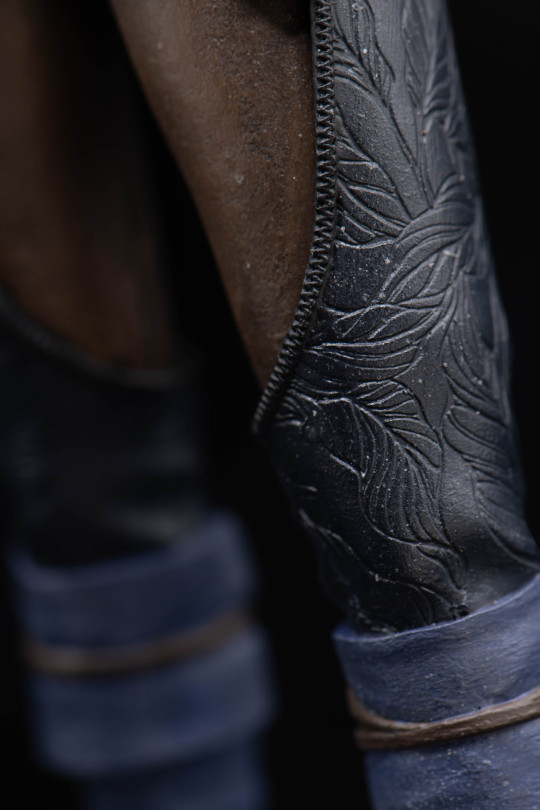

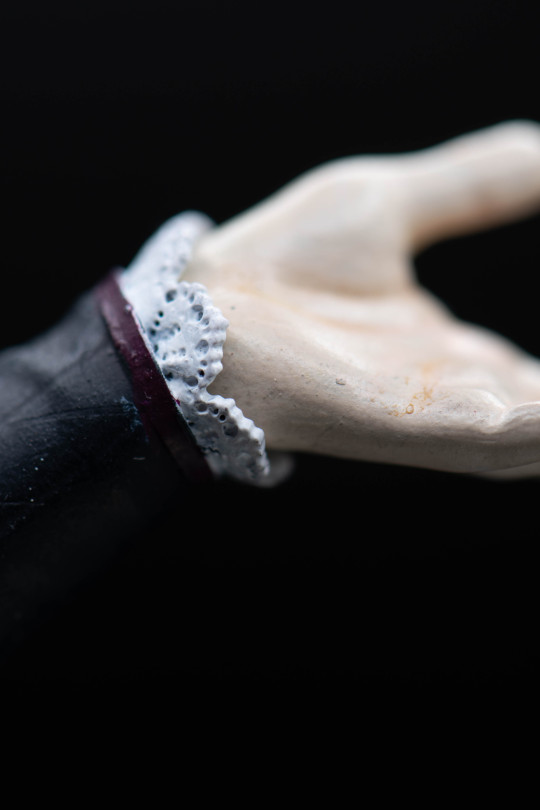
Had to share all these gorgeous details, like the TEXTURES on this models are just gorgeous! All that filigree and bead detailing is raised which made painting it much easier, but still very tedious (so worth the results though). This was my first time painting a face bigger than tabletop mini scale, and boy was I intimidated. Had some friends point me to ball-jointed doll makers and learned about detailing faces with chalk pastels, so I used pastels to give his cheeks some colour, blush the tips of his ears, and make the shadows under his eyes. I could go back and add more colour/texture to his hair but I think its best if I leave it, lest I play with it too much and end up ruining things. I have to keep reminding myself that just cause I can see things in macro lens photos, doesn't mean I'm actually able to go correct those things 😅
Regardless, I'm so so happy with how he turned out, and its crazy that I can look at this and go "me!!! I PAINTED THAT!! ME!!!", and now I have a stunning model of everyones favourite lil rat bastard (affectionate) vampire mans💕
#Astarion#astarion bg3#bg3 astarion#astarion ancunin#bg3#bg3 art#baulders gate 3#baulders gate 3 astarion#miniature painting#3d modeling#scale model#mini painting#model painting#I saw someone on social media with a fully painted astarion model#and was like WANT but having one professionally painted was $$$#and I thought to myself “I have a printer...I can paint...I'll just make my own!”#those artists deserve every dang penny they charge cause this took me like 30 hours#and before anyone asks no I won't be selling him or taking commissions#this was art just for me <3#I've already got an artsy side hustle I'm not making yet another hobby of mine a job lols#also bonus points to anyone who notices the rip in the back of his doublet#I didnt wanna wait to print a new one (and was out of resin) so I just went with it bc you can't see it from the front anyways hahahah
27 notes
·
View notes
Text
cases of endogenic plurality shouldn’t have to need psychology to be considered legitimate. Sociological explanations should be more widely understood and accepted.
I genuinely do not understand particular syscourse blogs’ obsessions with trying to build a psychological explanation for things that are very clearly sociological.
Sociological explanations?
So, society causes endogenic plurality?
Oh, like people said DID was sociogenic? We're doing that again!
I was trying to give the benefit of the doubt with the other posts and assuming they meant they just wanted endogenic plurality studied through the lens of sociology. Not that they were presenting sociology as the cause of and explanation for endogenic plurality.
Okay, let's take a step back and look at what these fields actually are. Because even the comparison to DID's socio-cognitive model would ignore that the socio-cognitive model is socio-COGNITIVE. Even that ridiculous theory didn't try to divorce DID from psychology altogether.
So let's first talk about what these fields are.
Psychology vs sociology
Psychology is the study of mental processes and behavior. It answers questions about what people do and understanding why — such as, the mental processes behind their behavior. Psychology is oriented towards understanding the individual and how the individual relates to the group.
By contrast, sociology is a study of systems and society. It investigates macro-level issues like poverty, food deserts, and unemployment. How do these structures behave within society, and what perpetuates them? It’s a big picture look at humans within the context of their society: how the group relates to the individual.
Sociology studies the anthill; psychology studies the ants.
This is a great way to look at the differences.
And it's why describing endogenic plurality as "clearly sociological" really doesn't make any sense.
Plurality is in the individual. It's something you only see when you're willing to look past the hill and see the ants.
Yes, there are some cultures where endogenic plurality is accepted, and that can lead to the creation of plurality in those cultures. But endogenic plurals have also formed outside of those cultural frameworks with no connection to those cultures.
That includes myself, who didn't discover tulpas until after I had already gained sentience.
Now, it is true that all types of plurality do have sociological influences. This is also true of dissociative disorders. If you have a dissociative disorder and you grow up in a culture where demon possession is more common, you may be more likely to view an alter as a demon.
But that doesn't mean all forms of plurality are CAUSED by those sociological influences.
But even IF they were, that still wouldn't be (primarily) sociology.
It would be social psychology
Essentially, social psychology is about understanding how each person's individual behavior is influenced by the social environment in which that behavior takes place.
In other words, if sociology is the study of the anthill and psychology is the study of the ants, then social psychology is the study of how the ants are affected by the anthill.
Relatedly, there's also psychosociology which explores the connection between psychology and sociology that could also apply here.
But regardless, you cannot divorce the psychology from plurality.
To view plurality as solely or even primarily sociological would be to erase the individuals who make up the group.
Non-metaphysical Plurality Happens in the Mind of the Individual
I'm not going into the metaphysical aspect because the truth is that I am a skeptic. Although I'm certain many spiritual plurals would dispute that their experiences are sociological too on spiritual grounds.
But for those with non-metaphysical views, I have a hard time believing these experiences would be viewed as more in the purview of sociology.
Do you think the hallucinations (including mindvoices of headmates) are more sociology than psychology?
The dissociation, including switching and letting other agents take control of your body?
The passive influence where your mood and feelings are impacted by the others in your head?
Partial possession or similar motor intrusions where someone else controls your limbs?
The complex inner worlds systems build?
Ooh! How about the sharing of dreams with headmates?
In what way is any of this "clearly sociological?"
Because frankly, I'm at a complete loss.
Obviously, Plurality shouldn't be confined to a single field of study
Anthropology can study different forms of plurality across cultures and history. Sociology can study how plurality may affect the cultures they're a part of and how society responds to plurality. Psychology can study what's actually going on in the minds of plurals. Neurology can look for physical signs of plurality in the brain itself. Heck, even biology could hopefully look at conditions that may make someone plural and how that could be woven into our genes. I'm a firm believer that one reason plurality is so common across so many cultures is because there are evolutionary advantages to being plural.
But looking to sociology for explanations for endogenic plurality, even as so many endogenic plurals discover their plurality outside of social pressures and influences and even in social contexts where plurality is heavily stigmatized, seems to fundamentally misunderstand both endogenic systems and the field of sociology itself.
#syscourse#sociology#psychology#science#multiplicity#sysblr#system stuff#systems#system#plural system#endogenic system#pro endo#pro endogenic#actually plural#actually a system
47 notes
·
View notes
Text
CONTINUED UNPOPULAR OPINIONS ABOUT STEP BY STEP, EPISODE 11
I will spare y’all my biting criticism with a read-more. But, TL;DR -- my review is short (for me, HA!), and I hand this show over lovingly to anyone who wants it.
(Thanks to continued conversations with the inimitable @lurkingshan and the utterly lovely @neuroticbookworm to ensure I’m not going insane with these thoughts.)
At this point, I don’t know what narrative lens we’re supposed to be watching this show through*. Maybe a few of them, together, but that is striking me as an understudied, overambitious, overworked, and confused approach to understanding this show.
Is it a queer narrative about how Jeng has been closeted-ish/held back in his public queer identification for so long that he’s turned into an inconsistent, incommunicative, distrusting putz? Is there a connection between his family being disapproving of his sexuality, and/or him running away from a filial fate of taking over his dad’s company -- and him being a bumbling asshole to Pat?
Is it a trust narrative about how Pat can’t trust ANYONE? Put, Jeng, Jeng’s dad, the company, Toh? Maybe even Chot? (I’m just throwing that out there, since Chot sent him into the battlefield with Jeng during the last episode -- I love Chot, I ain’t blamin’ Chot.) (Maybe I analytically get to this narrative by... assuming Pat can’t trust anyone, since his loving, COMMUNICATIVE parents ended up getting divorced?) (And in the process of that divorce, we learn, in part, that Pat’s mom couldn’t find her full potential in life unless she was outside of the marriage?) [So maybe that’s what needs to happen to Pat? Since Jeng is CLEARLY UNDERMINING Pat’s efforts to be successful on his (Pat’s) own, in multiple ways, by really not allowing Pat to have control over his (Pat’s) own life?]
Is this a MACRO MACRO narrative commentary on the failings of BL tropes and the BL industry as a whole? (The reveal of the once-toxic Ying as a fujoshi?)
It could very well be all of these narratives at the same time. However, the execution of this storytelling, at this point, is so inconsistent and choppy that 1) I can’t exactly tell, and 2) I’m so frustrated about the amount of time that I’ve spent trying to understand this show that at this point, I don’t really want or care TO care.
To refer back to my first point (*) -- I think it’s unfair for me to demand that ANY show have a singular narrative lens. But I propose that Step By Step would have been an actually successful drama if it hadn’t tried to do so much. I’m EXTREMELY biased right now on this kind of analysis, because I’ve just finished Until We Meet Again for the Old GMMTV Challenge, and watched two narrative lenses in DeanPharm and KornIntouch come together into one cohesive story. (And, fuck, I cannot believe I’m saying this about a New Siwaj show.) I mean -- you can take filmmaking classes that can teach screenwriters and directors how to handle multiple narrative lenses successfully.
Maybe that’s the word: cohesiveness. I’m not seeing cohesiveness in Tee Bundit’s Step By Step. Instead, I watched an episode with actual minutes -- MINUTES! -- spent watching an office team held in tension as internet “likes” poured in. Looking at computers. I spent MANY MINUTES watching Jaab WAFFLE over MULTIPLE episodes going back and forth on Jen... only to discover that he missed Jen’s departure to Japan -- a Very Big Life Decision that Jaab just *missed.* Okay.
And.... we are left with the break-up of Jeng and Pat. And a time jump.
I mean.
All that growth of the previous episodes, all that slow burn, all that processing of Pat’s growth into a hopefully successful professional digital marketer. For what. No cohesive character development or a sharpening of any narrative lenses.
The last thing I’ll offer is that I understand that Tee Bundit added themes to this show that were not present in the original novel, such as the aforementioned macro commentary on the BL industry and other workplace storylines. And, starting with episode 10, he was on his complete own, outside of the novel’s romance arc (thank you to @lurkingshan for confirming this for me). I’ll theorize, therefore, that what we’ve been watching these past few weeks is a Frankenstein-ed approach to this story where the novel focused on the romance aspect of Pat and Jeng, and Tee’s been wanting to drive home themes of workplace success (I think); professional growth (I think?!); homophobia in the workplace and the harms of either being disapproved of and/or being closeted or closeted-ish in general (Jeng, Chot/Krit, Pat), plus that macro commentary on the BL industry that got edited out.
But, and I emphasize here: not a SINGLE one of these threads has been illuminated to the point of clarity. I’ve wondered in the back of my mind if Tee maybe threw the baby out with the bathwater on this show AFTER the whole ZeeNew debacle, but -- whatever. The seams on this show were fraying weeks ago, and it shows.
Again -- I can’t think much longer on this show. It’s over next week. After a break-up and a time jump. We’re on the express train to a likely happy ending that I’m going to guess will be totally unearned. I had high hopes for each episode, only to be sorely disappointed since episode 8, when the drag got so unbalanced that I started to raise red flags. I want to see a surprise turn towards good storytelling for this finale next week. I want to be proven wrong about my instincts, but I ain’t putting any of my money on it.
#step by step#step by step meta#jeng x pat#pat x jeng#ben bunyapol#man trisanu#i think ben and man improved over the course of this series but were vastly underutilized#i think a better structured script could have leveraged both of their inexperiences much better
57 notes
·
View notes
Text

It is only well after I left college that I figured out the fun of finding reasons to 'research' things. The treasure hunt of digging for something not easily found online. I'm not creative (or curious) enough for this to come up often but am delighted when I get the chance to explore the depths of a library's offerings.

It's also rewarding to chase down a tight run of connections. This week's has been Dicken's Fair -> a musical about "The Naming of Uranus" -> reading about historical lady mathematicians -> visiting the Suzzallo library -> getting to use the Micro Print machine!
I'm perhaps known amongst some friends for my love of pushing the printing limits in making mini books. Imagine my awe and delight at getting to hold a micro print page! Now THIS would make a tiny book!

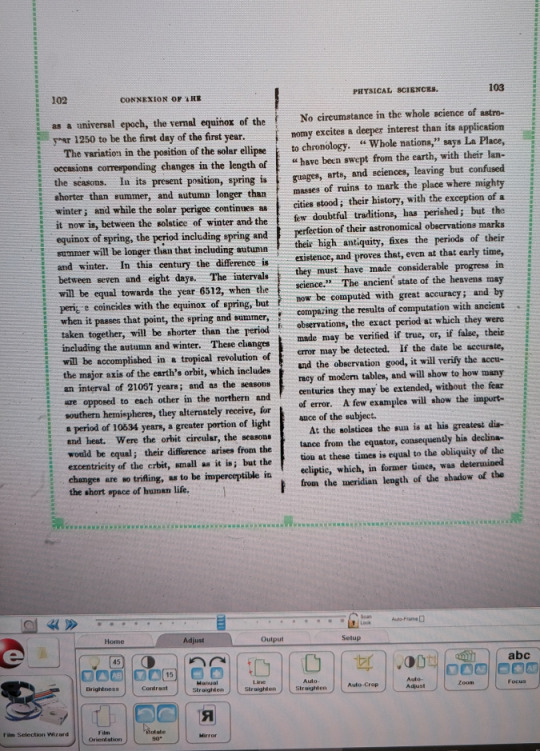
100 pages per sheet and absolutely not legible with the naked eye! Pages were brought into focus (on the digital screen) by panning the tray about. Not only easy to use, it made reading more fun! The book I wanted was actually missing the first sheet- thankfully there was a scanned copy I could read on a library machine -- interesting to see the aged pages in the 'digital' version, but I much preferred reading the micro print (even though it too was delivered to me 'digitally' at the end)

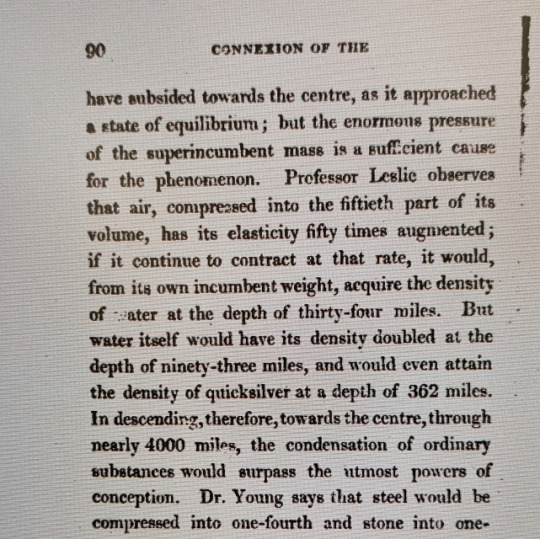
If I'd brought my Moment macro lens I could have taken some sweet photos (and read on my phone!) -- my new Pixel 8's macro mode just barely makes the text legible.
The initial bio on Mary Somerville I read mentioned that her writing was accessible and after reading a chunk of it for 20 minutes I heartily agree. Initially published in 1834, I'm sure there's a couple copies floating around out there (the library does have a physical copy, but it's at the off-site auxiliary and requires planning/advanced notice to get ahold of) -- makes me happy to now have a title to keep an eye out for in those rare bookshops/the collectables field.

#I remember a library studies student I sort of knew back in college asking for a subject to research as part of her coursework#at the time I could not really think of anything - but the question stayed with me - the very idea being novel#learning is fun#library#mary somerville#micro print
15 notes
·
View notes
Text
Twilight Advent Calendar 2023 Event
🌲🌲🌲🌲🌲🌲🌲🌲🌲🌲🌲🌲
Dec. 21 - Pick any five characters. What's something they always carry with them?

Jasper: Zippo lighter
You never know when you might need to dismember and incinerate an enemy. Or, you know, burn out an entire classroom because you accidentally killed the teacher and you have no choice but to murder the whole class to cover your tracks. Safety first.

Carlisle: doctor bag including a fantasy-level knockout syringe
I don't even know what's in that syringe. Propofol? Ketamine? Methohexital? Even if he were to inject a bolus directly into the jugular vein after making an educated guess about his victim's body weight, I don't think anything can work that fast. Cardiac arrest is more likely, but he's the doctor.
Anyway, that syringe canonically sees more action than Jasper's lighter and I think that's hilarious.
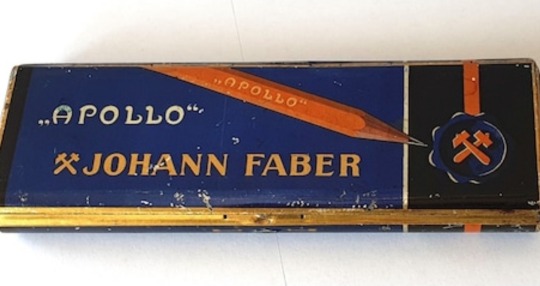
Esme: tin pencil box, 1921
Carlisle had an exasperating habit of purchasing any and every item that newborn Esme mentioned even the smallest interest in. When the words "I used to draw when I was a girl" crossed her lips, he practically ran out the door to shop for art supplies. This tin pencil box came home in his pocket. Esme still carries it in her purse to this day, stocked with whichever medium is her favorite at the time. A small, battered sketch pad is ready and waiting, too—you never know when you might stumble across something beautiful.


Rosalie: decorative makeup compact and emergency toolkit
It's important to Rosalie that everyone—humans and vampires alike—see her as both beautiful and competent. I don't think the books ever mentioned whether Rosalie and/or Alice wear makeup to school, but if they do, it has to be reapplied often because of the nature of vampire skin. And while she's perfectly capable of using people's glasses as a mirror (canon), I think she'd rather do it in style.
And she feels most comfortable when she's prepared for mortifying scenarios like her car breaking down in a school parking lot someday. She also likes being the one to say "Well actually you just need a 3/16 hex wrench—here" when someone is scratching their head over a broken chair/desk/bicycle/anything.

Charlotte: digital camera -> smartphone
Nomads have to be very particular about what they keep with them; no self-respecting vampire wants to dash around the globe wearing a backpack. But Charlotte had to, back when she had no choice but to carry around a bulky camera, extra rolls of film, and prints. She very happily made the switch to digital once the resolution became good enough. And now she's made the switch to smartphone photography (a little more grudgingly). Peter got her an iPhone-compatible macro lens last year and that finally won her over.
🌲🌲🌲🌲🌲🌲🌲🌲🌲🌲🌲🌲
You can find all of the #twilightadvent23 prompts here!
17 notes
·
View notes
Text
Skip and Loafer Episode 4: Tingling and Scraping
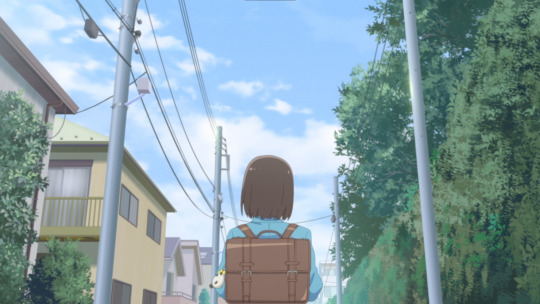
P.A Works and Skip and Loafer are doing it again, and again, and again. They continue to deliver interesting and unique direction and visuals that pile on a delightfully warm sense of comedy and friendship, and is complemented by thoughtful commentary and exploration of the most challenging aspects of being a high schooler. Today, that topic is regrets and expectations.
But who wants to start with the heavy stuff first, I like the cute and fluffy pieces too! Thanks to this episode's direction though, we get a lot of very beautiful scenery. There's a really strong focus that almost separates environment from characters, and lets you soak both up in copious amounts.





It's just so damn beautiful, but the characters can do a good job of distracting you from it. Take, for example, the use of CGI vehicles in the following scene. Unless you're looking at them they don't do anything other than populate the scenery, they just blend in so well with the lighting and color palette. To that end, I feel like P.A Works' use of CGI throughout the series so far has been really well managed. It fills up the layouts and adds life to the background of it all, but isn't enough where you're forced to look at it.

Anyways, moving on, the overall direction. I like it, it walks a fine line, but I like it. It's an episode that focuses far more on the internal pieces of characters so you get a good few close ups, but they do a good job of molding those pieces so that they fit within a "first person" perspective. It's very hard to explain, but basically the way they frame and block characters within a scene is to have viewers look through the eyes of a character, instead of the lens of a camera. It's a subtle piece, and I feel like they could do it better in some other areas, but there's quite a few pieces that stand out and really sell that first person feel.
Just simple things, like this scene of Mitsumi watching the old TV Drama that Shima-Kun acted in. The FoV is more stretched and there's the slightest visual effects to make sure viewers understand they're looking at a screen.

Or scenes like these pairs place us directly behind a character's line of sight (second image is a follow up cut that shows the pair in a single scene).
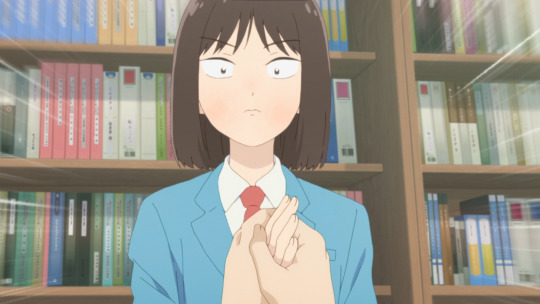



Stuff like this shows the strong awareness of today's episode director. Without these follow-up scenes, the direction (even though the initial scenes are still creative) can come off as typical or "standard", but the concept of that first person perspective is framed by seeing just how you saw the previous scenes. Really great work that's apparent through the episode.
Speaking of apparent through the episode, the comedy! I love that Takamatsu-sensei found a vehicle for their (non-deprecating) humor and ran with it. The adaptability of space, and its relation to Mitsumi is really felt in this episode. Thanks to that, I've got a newfound appreciation for the comedy and the sort of daydreaming aspect. It's so fluid and creative, and no matter what it finds its roots with Mitsumi which is really nice.
And just to round it out, the technical work on the speeds and movement of the background layers in this cut is so well done. Such a great mimicry of how it actually looks.

Alright, onto the story now! It's really lovely. I appreciate how it tackles the issues so much. It refuses to look at them as an issue that faces a single character, or one that characters can share, and instead brings the sentiment to a more macro scale and portrays it as something that every high school student deals with.
Shima-Kun has regrets, Mitsumi has regrets, Takamine has regrets, even characters like Kanechika are faced with regret and its challenges. And that's what this episode ends up all about, facing those expectations and staring down regret and what you might regret later down the road.

I feel like the above image really puts the whole episode into context quite well. What does it mean to have no regrets? When will you know if you'll regret something in the moment? They're questions without answers, and the curiosity possessed by the teenagers within the series does well to really sell it.
They don't have a real answer to it, nor can they quite put it into words, but instead they can experience it. They can understand how to live without regrets and how to find happiness in every corner in life. Like this scene of Takamine as she looks out the window of the bus
. She's regretting her decisions, she's beating herself up for losing and wasting time. But one little moment with Mitsumi wipes it all away, because the view was worth it. Such a simple thing as a landscape was enough to ease Takamine, and I think it's great. It's not the big moments that make that difference, it's the little ones you might not otherwise experience.

And god do I love how Takamine and Mitsumi are played off each other. They exist as polar opposites in the most important moments, and show how impactful each is on the other to strike a balance between the two lifestyles. Stuff like Takamine studying while Mitsumi eats candy and watches the scenery go by, just really simple pieces that establish that fundamental rift between the personalities of the two.

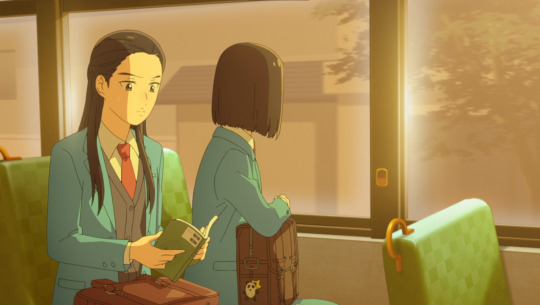
Surprisingly, something this simple is actually an incredibly important piece of symbolism that ties to an earlier conversation that Mitsumi had with Shima-Kun. Mitsumi used to have expectations and regrets weigh incredibly heavy on her, so bad that it was to the point that she wasn't eating while studying for exams. But one person was able to help carry that weight and let Mitsumi be free.
That's what's happening with Takamine and Mitsumi, an implicit conversation telling Takamine that it's okay to betray expectations and have regrets. That you can fail and not get into the middle school of your choice and still have a wonderful life. It's a really wonderful piece for reassuring people with their whole life ahead of them that they have just that. There's no rush to fill your schedule and do everything possible every waking moment to make sure you get to where you're going. It's all about the journey, or in this case, the bus ride.
And just to top it all off, Takamine really changes quite quickly. What's best about it though is that they show it as a subconscious change before they express it as a thought. They used to have nightmares about being left behind by the bus, but that gets replaced with a wonderful little dream sequence that takes Takamine through the stars.

It's just so... good. It does everything right and wonderful and bubbly and cute and sweet. It takes Takamine's desires and feelings as a high school girl and lays them bare to the viewer in what amounts to a fluff sequence.
And why you might ask? Well, like I said earlier it's a subconscious piece of Takamine, so there's lots of things within it. Take the cat, an amalgamation of the cat Mitsumi picked up earlier and Mitsumi herself. And then there's the idea of looking out the window of the bus at the scenery, and within that there's even paralells/similarities to how Takamine saw Mitsumi when she was looking out the bus.


Okay I promise to tie it off here. After her experience in her dream, we see her cutely mistake Mitsumi for the dream cat, before she follows it up with expressing to Mitsumi that she's not the girl that she thinks Mitsumi thinks she is. I think. But yeah, it's a great little scene that shows the confidence Takamine finds in herself from yesterday's experience to face today head on, and create a deeper relationship with Mitsumi in the process.
Even though we're already this far along I feel like there's a world of things to take in. Like how Shima-Kun speaks to expectations and how family bearing down on you can squash happiness and passion as you strive to live up to expectations and earn their affection. Or how thoughtful Mitsumi tries to be at times like not bringing up Shima-Kun's acting career to him. Or how Mitsumi's come to Tokyo to try and change a foundational issue with rural underpopulation in Japan (really, it's a pretty severe issue these days). It's such a diverse and deep story that you can hardly fit all of the good parts into one post. But you can summarize it with a single sentence.
Skip and Loafer continues to prove that it has incredible understanding and nuance in regards to high school life and how it affects students, depicting a wonderfully romanticized story that continues to stay close to the ground and provide important commentary and messages to viewers.
Though I guess that's more like a paragraph, isn't it?
#skip and loafer#skip to loafer#スキップとローファー#iwakura mitsumi#mitsumi iwakura#sousuke shima#shima sousuke#tokiko takamine#anime recommendation#anime review#anime and manga#anime#romcom anime
23 notes
·
View notes
Text


Bug butt!

So I have a micro four thirds camera, as of last week. And a vintage telephoto zoom lens. And a compatible extension tube. Obviously I stuck them all together and did some macro.
Camera sandwich below the cut:

If it looks silly, but it works, is it actually silly?
This is, surprisingly to me, kind of great for macro. This zoom lens has a stupid long minimum focus distance (usually). Extension tube addresses this, but I've still got an insane macro working distance. The photos above were taken from a couple feet away.
The mft sensor automatically "doubles" the focal length, so I've actually got a 160-400mm macro-ish capable lens right now.
I don't know what the reproduction ratio is, and I don't really care. I've never been a stickler for getting the "true" 1:1 reproduction ratio. But I can frame my subjects and can get some cool photos of small things (as long as they don't move!)
#photography#macro#olympus em10 mkii#rokinon 80-200mm#vintage lenses#bugs#eucalyptus#photoblr#mirith#micro four thirds
3 notes
·
View notes
Text
Ok, so usually when an idiot on Reddit posts an absolutely awful take and it gets upvotes, I roll my eyes and move on with my life, but this one has been living in my head for a little while now so I feel the need to rant about it.
The Awful Take (TM) was as follows: Dune and Star Wars are not science fiction because they are not rooted in science, instead, they are space fantasy because it’s all just about politics in space and stuff.
Now, I’m fine with the Star Wars half of this. I actually agree with that part. It’s the Dune half that is absolutely asinine, ill-considered, and just plain wrong.
There’s a few reasons for this.
For starters, Dune is absolutely rooted in science, particularly the novels. The entire plot centers around planetary ecology, and explores the impact of ecology on resources and the way that the resulting scarcity of certain resources impacts culture, society, and politics at macro and micro levels. This really is about as science-driven as science fiction can get, and Herbert put an incredible amount of consideration into making it work.
All of which is to say, science fiction is fiction that is not explores how scientific and technological advancement, understanding, and exploration impact humanity, and Dune does exactly that. The political structures, economic structures, and social structures of Herbert’s universe are built around the aforementioned fictionalized ecology as well as a hypothetical future involving space travel and what humanity would look like in a post-AI, post-computer world.
Fantasy, by contrast, is rooted in folklore and mythology. Tolkien’s middle-earth works were (at least partially) an attempt to create a mythological history for British cultures, and were heavily influenced by Nordic and European myths such as the Kalevala. The Witcher is based largely in deconstructions of European folktales. Harry Potter blends mystery and coming-of-age genres with a setting that basically establishes European folkloric and mythological creatures and tropes as part of its universe. And that’s not even getting into the volumes and volumes of fantasy that’s basically just copies, deconstructions, reconstructions, parodies, and loving tributes to what Tolkien did with Lord of the Rings.
Which brings us to Star Wars. George Lucas has been extremely open about the influence the Joseph Campbell’s theories regarding mythology (particularly the Hero’s Journey as discussed in The Hero with a Thousand Faces) has had on the franchise he created. The aesthetics of Star Wars are rooted in old Flash Gordon serials; the world building was inspired by science fiction franchises such as Star Trek and, yes, Dune; and some of the characters and plot points were inspired by Akira Kurosawa’s jidaigeki films; but the overall story arc, the narrative heart of the films, and the broader themes that they dwelt upon were rooted in a Campbell’s hero’s journey (with a hefty dose of East Asian mysticism and philosophy thrown in there). The films that compromise the core of the Star Wars franchise -episode I though IX- have very little interest in exploring futuristic scientific and technological concepts; they are simply presented as either plot devices, or neat-looking spectacle that leans on Asimov’s maxim that any sufficiently advanced technology is indistinguishable from magic. What it is interested in is Luke’s growth from starry-eyed farm boy to archetypical hero, wizards of light and darkness battling each other in cataclysmic conflicts of good vs. evil, and a redemptive arc for a villain who was effectively a fallen angel figure. Star Wars pretty solidly meets the qualifications for fantasy.
Dune, by contrast, does not. Dune is not rooted in mythology. It is not rooted in folklore. The closest it comes is in its discussions of religion, but even that is explored through a (rather cynical) lens of political and social sciences. Dune is more interested in how humans interact with the world(s) they live in. Dune is, simply put, science fiction.
And while we’re at it, Star Trek is, too.
#science fiction#sci fi#sf#fantasy#dune#Star Wars#Star Trek#Reddit#rant#I hope this is coherent#I have two bourbons and an edible in me
4 notes
·
View notes
Text
Lens Calibration Madness
I was doing some more tests comparing my smartphone camera to my DSLR and I noticed in one of them the smartphone looked sharper than my DSLR.

(Smartphone top, DSLR bottom)
This did not compute.
How did a camera with a tiny sensor, half the megapixels, and a tiny plastic lens produce a sharper image?
Then I remembered that 3rd party lenses often need to be calibrated in order to focus properly. Canon is especially bad about restricting information about their focusing algorithms, so companies like Sigma have to reverse engineer everything. With mirrorless cameras they have been able to fix this focusing issue. DSLRs... not so mich.
Unfortunately, my camera has a flippy mirror that gets out of the way of the sensor every time you take a picture. That's the clicking sound most people associate with taking a photo. And since the mirror in a DSLR is a moving part, it will have some variability from camera to camera. And wouldn't you know it, DSLRs use that mirror to focus. If my mirror is even a few nanometers out of alignment compared to the camera Sigma used to create the focusing system for their lenses, I will not be able to get perfectly accurate autofocusing.
It will be good enough for most. But with all of the product photos and macros I do, having perfect focus is pretty critical.
So now I need to spend a couple of hours photographing test targets.
The lens was "front focusing."

You want the depth of field to cover the same distance in front of the 0 as behind. You can see the 1 and 2 at the top are blurry. The goal is to have the 1 and the 1 to be of equal sharpness. Ideally if you put the 1 and 1 next to each other, you wouldn't be able to tell them apart.
This caused a problem when taking a picture of a cylinder, like the flashlight I was using as a test subject. The text at the center of the cylinder was in focus, but the sides were farther away and started getting blurry. All of the in focus area was in the empty space in front of the flashlight.
But, after 20 test shots adjusting the focus correction 1 unit each time, I was finally able to dial it in.

And then when I redid my photos of the flashlight...

Not only was the DSLR much sharper, you can now see the individual lines from the printing process.
I have been using this lens like this for years and now I am wondering how many photos were a smidge out of focus. It's not a huge deal because you have to be zoomed in about 400% to really notice. And it really only affects photos taken less than 2 feet away.
But still, perfectionism is a pretty big trigger for my anxiety so I need to fix this so my brain doesn't melt every time I take a photo in the future.
Unfortunately, the issue isn't resolved with one adjustment.
It requires 16 adjustments.

You set the focal length of the lens to 18mm and take a test picture from 28 cm, 35 cm, 50 cm, and 2 m.
Then you set it to 24mm and do it over again.
Then 28mm.
Then 35mm.
And there is no gaurantee you will fix it with the first adjustment. You could overshoot or undershoot. So you have to keep testing and testing until you drill down and hit the bullseye.
All because Canon doesn't like other companies making lenses for their cameras.
Sigma will actually do the calibration for you, but you have to send them both your camera and your lens and who knows how long that would take.
And I really want to bring my camera to Florida in a few weeks.
So I guess I've got another project aside from my 20 other things I need to get done.
88 notes
·
View notes
Text
Sony Mavica FD-7 (1997)
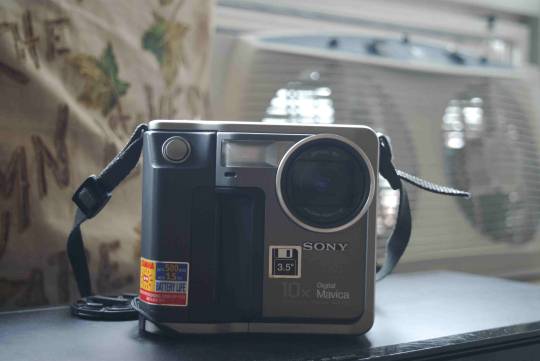
This is the Sony Digital Mavica FD-7, released in 1997!
Sony is probably more well known now for their line of professional mirrorless cameras, but back in the heyday of digital photography, Sony was doing some strange, strange things.
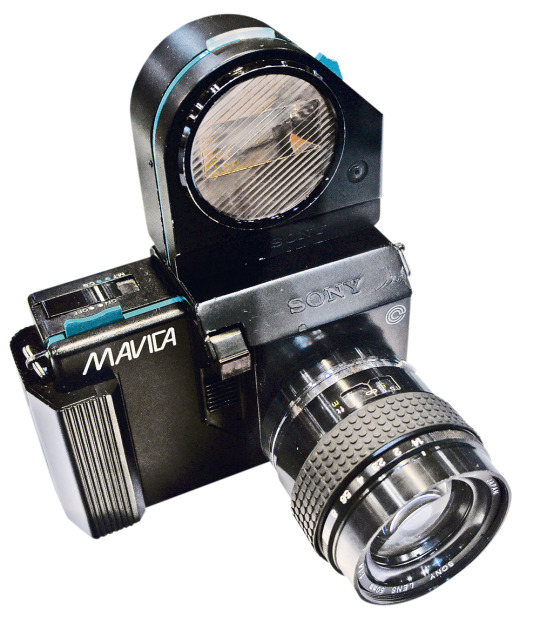
The history of Sony's ventures into digital photography has been covered extensively on the internet, so I won't go into it much, other than the quick facts. In 1981, the first product of theirs to bear the Mavica name was a prototype Still Video Camera from 1981. Still Video Cameras are a whole other can of worms as well (and one I really really want to get into when I inevitably come into possession of one). Mavica stood for MAgnetic VIdeo CAmera. The photos, which were just still frames taken from video were stored on these:

VFDs, or Video Floppy Disks. Again, this is a whole other beast when it comes to the history of digital photography. Sony manufactured a few of these Still Video Cameras under the Mavica line in the 1980s. Eventually this product line was discontinued, but Sony resurrected the Mavica name for a long-running series of floppy disk (and later CD) based cameras in the mid 1990s and 2000s.
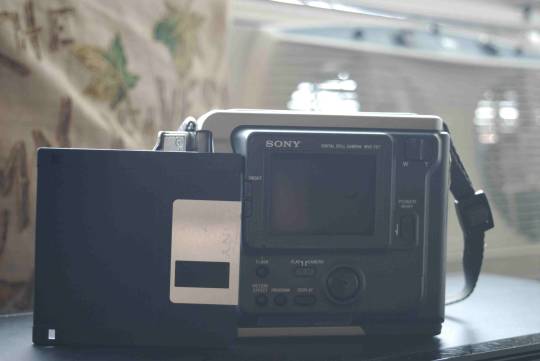
The FD-7 was part of the first run of Sony's Digital Mavicas, along with the FD-5, pictured below, which was the lower end model with a fixed focus lens.

The FD-7 was the higher end model with a much larger lens, a 4.2-42mm f1.8, and has a 10x optical zoom. Both stored their images, as shown above, onto floppy disks.

You could store about 40 or so images in the camera's Standard mode, and about 20 in Fine mode, which for the time and the storage medium was pretty respectable. Floppy disks were everywhere at the time, so there really wouldn't have been any issue in terms of running out of storage.
One other quirk of these cameras I'd like to address are the Field/Frame modes. The Mavicas are actually doing something sort of clever here. The image sensor inside is still one used for video.
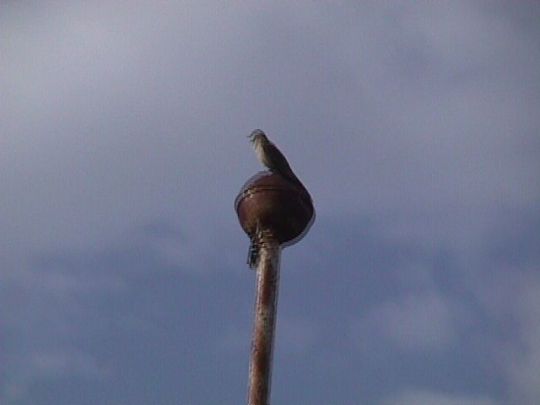
If you look at this image I've taken, you can see there's an after-image left behind on it. This is a result of the camera's sensor. The Field/Frame option does...something...that I think reduces the effect (Honestly Clint from LGR's video on this is where you should go for the technical details https://www.youtube.com/watch?v=3Nu6C-Ci7_Q)
ANYWAY. With all of that out of the way, here are some of the shots I've taken! (As with a LOT of digital cameras from around this time, the FD-7 shoots in 640x480 resolution, with quality modes delineating the amount of compression the image is given. All of these shots were taken in Fine mode.)

(This camera has a very good macro mode, btw!)
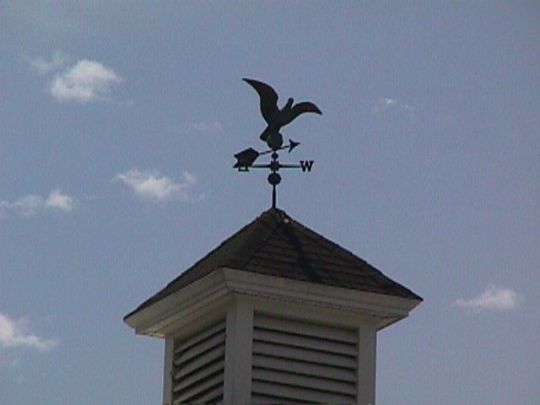



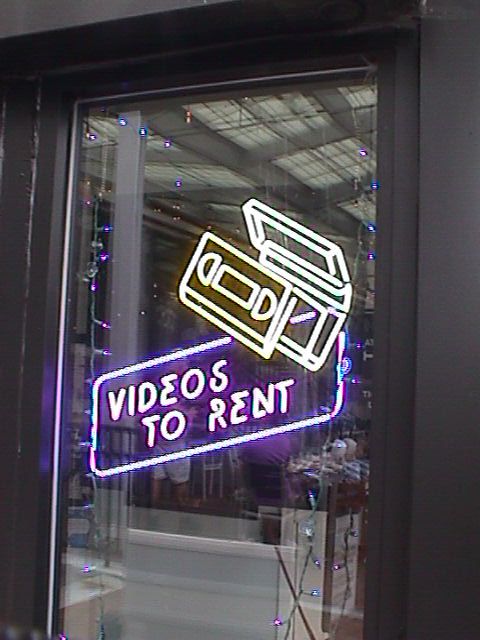
And there you have it! Honestly, I may just forego the rating portion of these after the first one. I want my concluding thoughts to be more interesting than a bunch of numbers.
If you like the challenges shooting with a low resolution and on a non-standard memory format, pick one of these up! USB floppy drives can be found for really cheap, and you can just drag and drop them from the disks right on to your computer, no fiddling required. I will say though, as a warning, that this stuff is nearing 30 years old. I actually have two of the FD-7s because my first one failed and refuses to focus in any way. Floppy disks can also be a problem, as I've had certain ones fail to record images due to bad sectors.
Other than that, these cameras feel surprisingly good in the hands, despite their boxiness, and are generally just really fun cameras to use. I have some of the later Mavicas, and while their image quality is better, (with the caveat that you can store much less images per disk) the original has this charm to it. It was the first of a series of really odd cameras that feel alien compared to today's camera market. And just for that, I think it's so cool.
3 notes
·
View notes